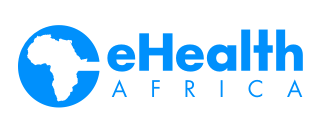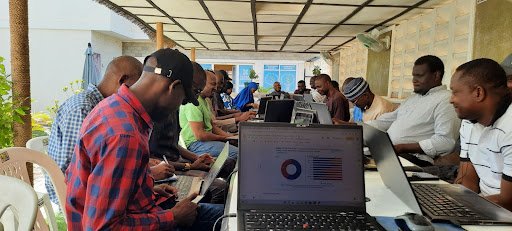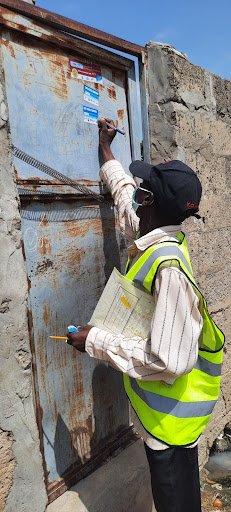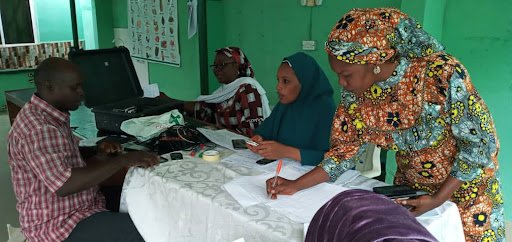Dr Dennis H. Marke speaks on how digital health innovations will revolutionize anti-malaria fight
By Moshood Isah
As part of effort and advocacy to achieve Zero Malaria by 2030, experts have continued to call stakeholders in the health sector to intensify the adoption and deployment of digital health innovations for the fight against malaria especially in the African region. This is in line with the 2023 Malaria Day theme; time to deliver Zero Malaria: invest, innovate, implement.
To commemorate World Malaria Day 2023, the World Health Organisation (WHO) had urged countries affected by malaria globally to accelerate the reach of high-impact tools and strategies to prevent, detect and treat malaria, with a focus on reaching the most vulnerable, ensuring that no one is left behind.
According to the World Health Organisation, there were an estimated 247 million cases of malaria worldwide in 2021 with over 600,000 malaria deaths yearly. Unfortunately, the African Region is reportedly home to 95% of malaria cases and 96% of malaria deaths with Children under 5 accounting for about 80% of all malaria deaths in the Region.
Despite continued effort to eradicate malaria, the parasite remains a challenge especially amongst children. This is largely due to rising resistance to insecticide-treated nets and to antimalarial drugs particularly in Africa according to the World Health Organisation. It is more than ever imperative to deploy innovative ways to combat the parasite which is why stakeholders are now turning towards the use of digital tools. Adoption and deployment of innovative digital tools have helped in early detection, improved diagnosis and potentially better treatment of Malaria parasites in the predominantly affected locations.
For instance, Lomis, an offline logistic management tool was custom-built by eHealth Africa for the Seasonal Malaria Campaign (SMC) in Borno, Nigeria. The platform was used to support the distribution of malaria commodities, including insecticide treated nets (ITNs), malaria diagnostic kits, and antimalarial drugs. Through the platform, government and development partners were able to track the distribution of malaria commodities from the national level down to the health facility level. Plainfield is another eHealth Africa's digital solution- a mobile and web-based application that helps you plan field logistics for public health interventions. It is deployed for malaria campaigns to ensure better planning, tracking of teams, data collection, and coverage with geospatial tools. Other tools proving to be important in fighting malaria especially in the area of logistics management and distributon, include CommCare, Redrose, Reveal amongst others.
Speaking during Insights- a public health webinar hosted by eHealth Africa, medical expert, Dr Dennis Marke, a clinician and program manager, Systems strengthening in the ministry of Health and Science and National Malaria control program in Sierra Leone reiterated the need to strengthen public private partnership to improve the fight against malaria through improved access to medical information, communication and health application in issues around malaria control.
The webinar series tagged; insight titled “Time to Deliver Zero Malaria: Investing in Sustainable Digital Health Innovations," fosters conversations with professionals within the public health space. During the discussion, Dr Dennis said digital health tools have proven instrumental in the seemingly unending antimalaria fight in the region.
According to him, mobile based innovations through SMS messages have between 70-80% penetration in Sierra Leone and have been effective in reaching out to the population about the symptoms of Malaria and need for testing. He gave an instance saying, "in the 2017 mass campaign, we used rocket pro mobile applications to track the supply of medical equipment and drugs at our peripheral health units".
Dr Dennis also mentioned other forms of digital tools like Solar Power Mosquito Trap; District Health Information System(DHIS) amongst others, that have been instrumental in laboratory analysis, research, surveillance and tracking of health interventions even in remote communities.
While admitting the existing challenge of Internet connectivity in some hard to reach communities he said, "you can have this technology sitting out there and if the cell phone penetration is the hardest to reach, the marginalized communities are not covered, that's a huge challenge". He called for proper coordination in delivering digital health interventions, through effective mapping of digital health partners to identify their areas of strength. This according to him will ensure unity of purpose and to ensure all partners work towards achieving the overall goal of fighting against malaria.
Insights is a Public Health webinar series hosted by eHealth Africa. The webinar series enables conversation with public health professionals to establish eHealth Africa as a thought leader in the Public Health space, create visibility for the organization and create new opportunities for business opportunities for the organization within the public health space.









